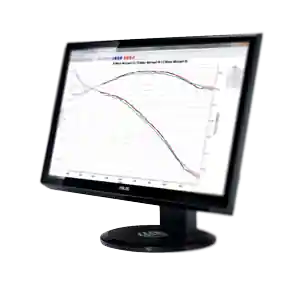A correction factor is an estimate to adjust an engine’s power value under different atmospheric conditions. How does this affect engine testing on a dyno? Correction factors are necessary because the same engine can produce more or less power under different atmospheric conditions. Let’s look at the following examples:
Air Density in an Engine
Air volume increases with temperature (assuming pressure remains constant). According to the ideal gas law, it becomes less dense. Therefore, air contains fewer oxygen molecules in the same volume at high temperatures than at low temperatures, and the amount of oxygen significantly affects combustion.
An internal combustion engine is a machine that feeds on air and fuel. It takes oxygen from the air, and with that oxygen it generates heat through oxidation or combustion of the fuel.
An engine’s power and torque will fundamentally depend on the amount of fuel that can be burned in each engine cycle, and the RPM at which the engine is turning. The amount of oxygen that can enter a cylinder will depend on the density of the incoming air.
Atmospheric Pressure Also Influences an Engine
The same occurs with atmospheric pressure - at lower pressure, air becomes less dense and the engine’s torque and power decrease. Humidity directly affects engine performance because water vapor dissolved in the air occupies volume. That volume ultimately reduces the volume of pure air. This means that these water particles are occupying space that could contain more oxygen.
Engines produce more power with cold, dry air (and high atmospheric pressure) than when operating with high temperatures and high humidity.
Standards
The power of an internal combustion engine should be more or less the same regardless of the geographical location where it is measured, but environmental conditions at the time of measurement significantly influence engine measurement: atmospheric pressure (and height above sea level), humidity, and temperature.
To overcome these issues, standard reference conditions have been established that specify pressure, temperature, and humidity to which all engine measurements should refer in order to make these tests repeatable and comparable with other corrected measurements. This way, values obtained in very different climatic and geographical conditions can be compared. These standards are specified in various international norms, most notably the SAE, DIN, and EEC standards.
How Does the Accudyno System Calculate the Correction Factor?
The AccuDyno system effectively uses these standards for correcting torque and power in engine tests. By entering the environmental conditions (temperature, humidity, and ambient pressure) via keyboard, the system immediately calculates the correction factor value. If you also have our atmospheric station, these conditions will be automatically entered with the real conditions in the test room.
